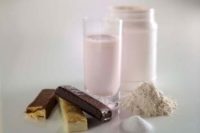Fortifying milk: How ingredients add value
Extra vitamins such as A and D, along with other components (extra calcium, omega-3s and probiotics), offer bonus nutritional benefits in milk

What type of milk is best? Is fat in or out, and what about sugar? These are questions swirling in the minds of many consumers. By providing people with information about the fat, sugar and calories in cow’s milk options in the marketplace, the dairy community can help people choose the right dairy foods to meet their needs.
Milk is minimally fortified. An 8-ounce serving of whole milk naturally contains eight essential nutrients — protein, calcium, phosphorus, riboflavin (B2), niacin (B3), pantothenic acid (B5), cobalamin (B12) and vitamin A — and contributes value to nutrition and public health. Only vitamin D is not inherent to milk in substantial quantities.
History and background
Fortification means adding nutrients to conventional foods and beverages and is synonymous with enrichment. The FDA does not mandate nutrient fortification of food in the United States, nor is it prohibited if there is a documented public health need. However, the levels of optional nutrient fortification of standardized foods (e.g., milk) are specified in the agency’s food standards regulations. Even where specifically defined for an enriched standardized food, fortification is voluntary.
The FDA does have a uniform set of principles for the rational addition of nutrients to foods. The guidelines cover, in part, the addition of nutrients to correct dietary insufficiencies when sufficient information to identify the nutritional problem exists to restore nutrients lost during storage, handling or processing and to balance the nutrient content of a food under specified conditions. Milk has a standard of identity, and most milk at retail in the United States is fortified with vitamins A and D.
Vitamin A
Because vitamin A is fat-soluble, some of it is removed in the process of making lower-fat milks. The addition of vitamin A (retinol), vitamin A acetate (retinyl acetate) or vitamin A palmitate (retinyl palmitate), therefore, is necessary in lower-fat milk products (except yogurt) to achieve nutritional equivalency with their full-fat counterparts.
If vitamin A is added to milk, it must be added at a level to achieve a minimum of 2,000 international units (IU) of vitamin A per quart. The acceptable range for vitamin A is 2,000-3,000 IU per quart. Vitamin A is important for growth and helps keep eyes and skin healthy.
Vitamin D
The addition of vitamin D (D2 or D3 in crystalline, resin or crystal form) in milk and milk products is optional. If vitamin D is added, the amount must achieve a minimum of 400 IU per quart within the limits of good manufacturing practice. The acceptable range for vitamin D is 400-600 IU per quart of milk.
Vitamin D was originally added to milk because it enhances absorption of calcium and helps prevent rickets — a bone disease in young children who lack adequate vitamin D. Rickets was a significant problem in the United States before the addition of vitamin D to milk became a common practice.
More calcium, protein and more
Some milk-based products have additional calcium, protein or other components such as omega-3s and probiotics added. Claims with terms such as “more,” “fortified,” “enriched,” “added,” “extra” and “plus” are relative claims that may be used to describe the level of protein, vitamins, minerals or dietary fiber in an individual food. Foods using these claims must contain at least 10% more of the daily value of the nutrient per reference amount than is found in an appropriate comparison food.
Milk’s inherent package of essential nutrients offers people a runway to good nutrition and health. It makes sense for brands making a fortified, nutritious beverage to start with something already nutrient-rich such as milk. Anything beyond what’s already in milk (such as higher protein or omega-3s) is a bonus and may help people with specific needs meet those needs.
Looking for a reprint of this article?
From high-res PDFs to custom plaques, order your copy today!










